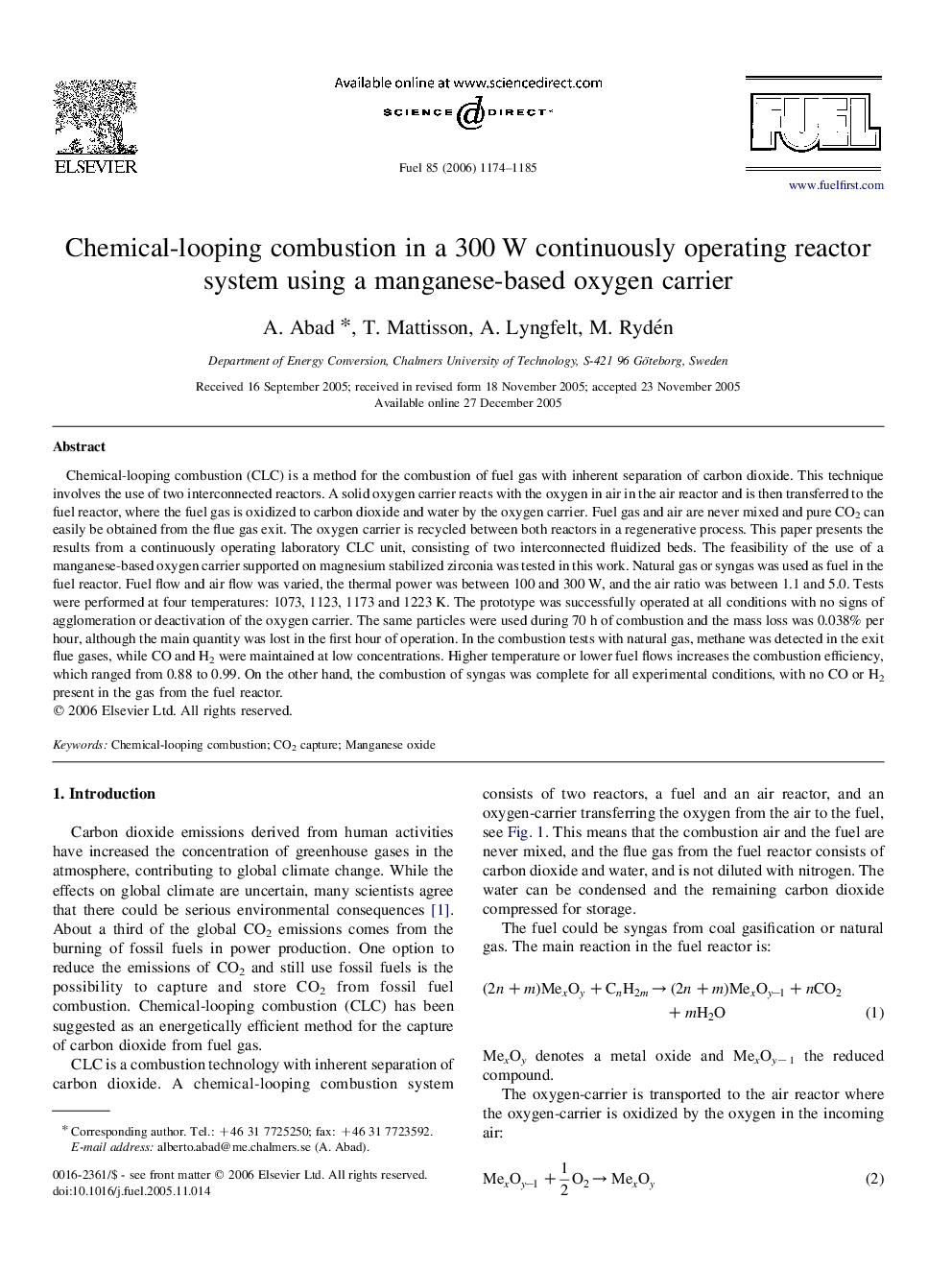| کد مقاله | کد نشریه | سال انتشار | مقاله انگلیسی | نسخه تمام متن |
|---|---|---|---|---|
| 208691 | 461261 | 2006 | 12 صفحه PDF | دانلود رایگان |

Chemical-looping combustion (CLC) is a method for the combustion of fuel gas with inherent separation of carbon dioxide. This technique involves the use of two interconnected reactors. A solid oxygen carrier reacts with the oxygen in air in the air reactor and is then transferred to the fuel reactor, where the fuel gas is oxidized to carbon dioxide and water by the oxygen carrier. Fuel gas and air are never mixed and pure CO2 can easily be obtained from the flue gas exit. The oxygen carrier is recycled between both reactors in a regenerative process. This paper presents the results from a continuously operating laboratory CLC unit, consisting of two interconnected fluidized beds. The feasibility of the use of a manganese-based oxygen carrier supported on magnesium stabilized zirconia was tested in this work. Natural gas or syngas was used as fuel in the fuel reactor. Fuel flow and air flow was varied, the thermal power was between 100 and 300 W, and the air ratio was between 1.1 and 5.0. Tests were performed at four temperatures: 1073, 1123, 1173 and 1223 K. The prototype was successfully operated at all conditions with no signs of agglomeration or deactivation of the oxygen carrier. The same particles were used during 70 h of combustion and the mass loss was 0.038% per hour, although the main quantity was lost in the first hour of operation. In the combustion tests with natural gas, methane was detected in the exit flue gases, while CO and H2 were maintained at low concentrations. Higher temperature or lower fuel flows increases the combustion efficiency, which ranged from 0.88 to 0.99. On the other hand, the combustion of syngas was complete for all experimental conditions, with no CO or H2 present in the gas from the fuel reactor.
Journal: Fuel - Volume 85, Issue 9, June 2006, Pages 1174–1185